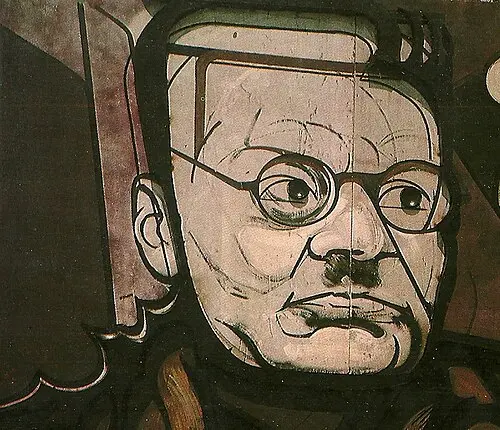José Clemente Orozco: The Muralist Who Painted the History and Tragedy of the People

August 1, 2025 Hour: 2:11 pm
José Clemente Orozco was one of Mexico’s greatest muralists of the 20th century. Born in Zapotlán el Grande, Jalisco, in 1883, and passing away in Mexico City in 1949, his life and work were marked by a deep social commitment and a critical view of Mexican history and the human condition.
RELATED:
Diego Rivera: Art as a Mural Revolution
From a young age, Orozco showed an interest in art. He studied at the Academy of San Carlos and also trained in agricultural engineering and architectural drawing. His first contact with visual expression came through the political engravings of José Guadalupe Posada, which influenced his socially engaged artistic vision. He soon developed a distinctive style—intense and dramatic—with strong expressionist traits.
Orozco was part of the trio known as “Los Tres Grandes” of Mexican muralism, alongside Diego Rivera and David Alfaro Siqueiros. Unlike Rivera, who often celebrated revolutionary ideals, Orozco chose to focus on human tragedy, violence, and the contradictions of history.
Among his best-known works is Cortés and La Malinche (1926), a fresco in the Antiguo Colegio de San Ildefonso, where he depicts the conquest of Mexico as a violent and ambiguous event. In Guadalajara, he left a significant legacy through murals at the Government Palace and the University of Guadalajara, where he explored themes such as social struggle, authoritarianism, and collective suffering.
His talent also took him to the United States, where he painted Prometheus (1930) at Pomona College—considered one of the first major works of modern muralism in the U.S. Shortly after, he created The Epic of American Civilization (1932–1934) at Dartmouth College, a series of 24 panels that challenge the official history of the Americas and address themes such as war, industrialization, and Indigenous resistance.
Orozco’s style is known for its visual power, monumental figures, and a palette of dark yet vibrant colors. His approach to art was not decorative but deeply ethical and political. He painted to provoke thought, to disturb, and to reveal what many preferred to ignore.
Today, his legacy endures. In 1959, his work was declared a national artistic monument by the Mexican government. His influence extends beyond borders, inspiring Chicano art in the United States and new generations of muralists.
José Clemente Orozco was more than a painter—he was a critical witness of his time and a storyteller of Mexico’s and humanity’s deepest wounds.

